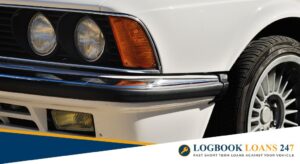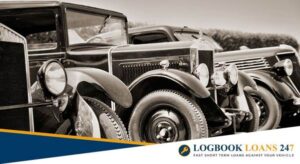Terminology matters when it comes to collectable cars, as any genuine collector will tell you. While the terms “classic” and “vintage” are often used interchangeably by people outside the market, they actually have different official definitions.
The confusion arises because a lot of terms are used to describe older cars in the media and at car shows and auctions, hence “classic car” is used for many other vehicles that fall into a more defined subset, such as vintage.

© Delpixel / Shutterstock.com
What is a vintage car?
To qualify as a true vintage car, the date of manufacture must fall within a very narrow date range of between 1919 and 1930. These cars are usually considered to be collector’s items, so can be fairly expensive, depending on how well they have been looked after.
Plenty of collectors enjoy restoring vintage cars as a hobby, while there are organisations and clubs all over the world devoted to these special cars.
The original Ford Model T, in production between 1908 and 1927, was the first mass produced affordable car and is classed by many as the marque that coined the “vintage car” definition. Other vintage cars include the exotic 1928 Duesenberg Model J sports car, with its eight-cylinder engine that produced 265 horsepower; the technically advanced 1920s Lancia Lambda, produced from 1922 to 1931; and the Austin Twenty, which is a large four cylinder car manufactured from 1919 to 1930.
At the start of the 1920s, there were only around 187,000 cars in Britain, so as you would expect, there are very few cars from 100 years ago still on the roads here, although collectors may have them in private collections, even if they’re not considered roadworthy.
Data suggests there are around 20 old Ford Model Ts still in existence in the UK. The Duesenberg Model J featured in the London Classic Car Show of 2020. Owned by the Haynes Motor Museum’s Workshop and Restoration team, it was carefully restored and prepared for the prestigious auto show.
Associated with Hollywood’s heyday, the marque was owned by several actors, such as Mae West and Clark Gable.
What is a classic car?
A classic car is slightly harder to define, as a broader set of factors are used. Collectors describe a true classic car as one that’s older and has a degree of historical significance, making it of collectible worth. Sought after for its design, style and long standing appeal, it has one quality that everyone agrees on: it will never go out of style and has a timeless appeal.
While classic cars can date from any era, they are usually linked to periods of the golden age of vehicle design from the 1940s to 1960s and have features no longer associated with modern cars such as round headlights, sweeping curved lines and chrome detailing.
Certain classic cars may have appeal due to their association with a celebrity owner, their cultural significance, or their links with a specific period in time. Models generally considered as “classic” include the 1960s Jaguar E-Type, which is often called “the most beautiful car ever made”; and the pre-1974 Porsche 911, representing a golden era of sports cars and described by collectors as being “magical” and “amazingly well built”, as well as aesthetically pleasing.
Both models remain popular in the UK today, with DVLA data revealing there are 4,565 E-Types and around 3,000 older Porsche 911 currently licensed for road use.
Why does the distinction matter?
The distinction is important due to the impact on insurance policies, valuation and vehicle registration. For example, insurers often use the term “modern classic” to cover newer collectable vehicles, specifying limited mileage as part of the policy, to provide better deals for owners.
For collectors who purchase vehicles as an investment, the classification can be important if you’re looking into logbook loans for older cars, when your vehicle’s age, model, classification and condition can all be taken into account by lenders. These factors will help determine how much you can borrow using your automobile as collateral.
Both classic cars and vintage cars can be worthwhile investments for people who may need to raise capital fast in the event of unexpected expenditure, such as a major home improvement, or business expenses. Owners may consider logbook loans as an alternative to traditional lenders such as banks, as the process can be faster and can suit borrowers who may not have access to other sources of funding.
Reputable lenders offering vintage cars logbook loans and classic cars logbook loans will explain to potential borrowers how the transaction works, enabling you to carry on driving your car for the duration of the repayments, rather than having it locked up somewhere and taken off the road.
If you decide to pawn your car, our advisors will be happy to discuss all aspects of the loan to determine whether it’s the best option for you.



